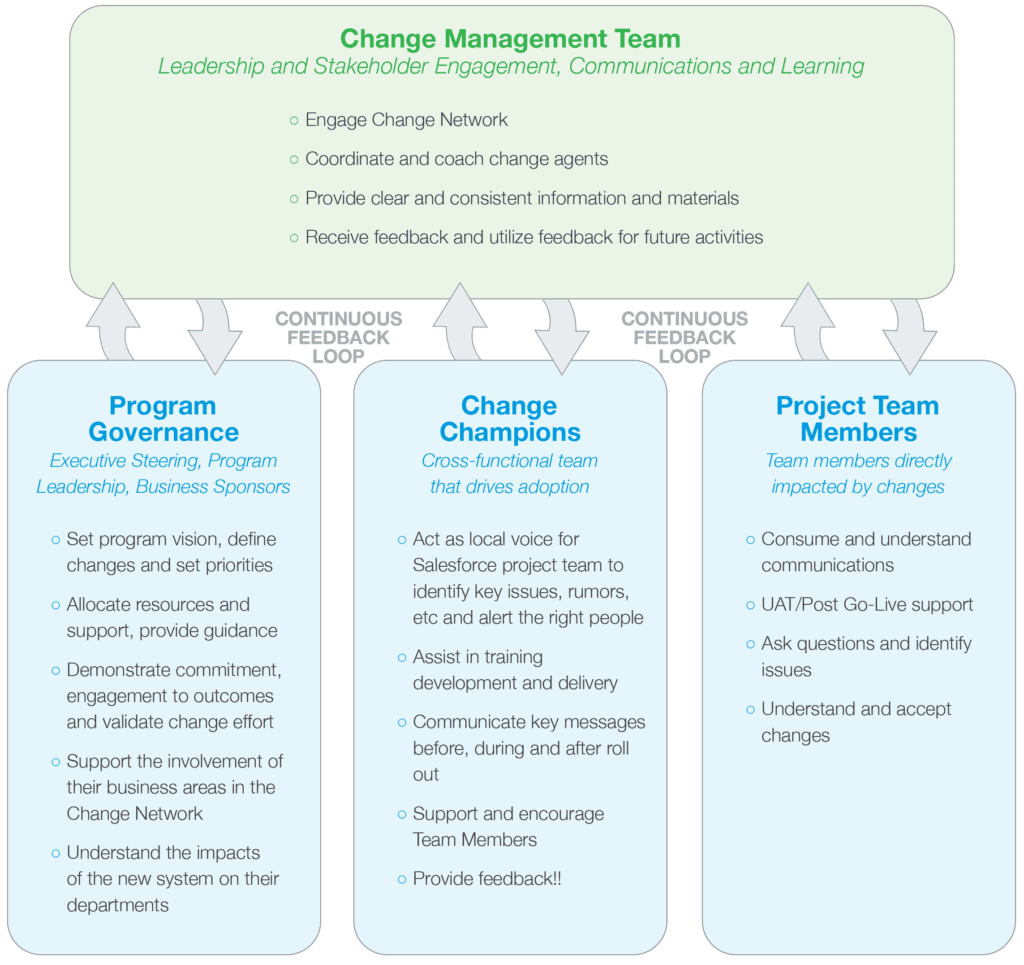This is part three in a series on unlocking change management mysteries. Check out the first and second pieces.
Silverline developed our change management framework based on a combination of industry best practices, the Association of Change Management Professionals (ACMP) Standard, and the Prosci methodology that accelerates and maximizes user adoption. The framework comes down to three phases, the second of which is enablement.
Your change management plan may change. That’s ok, and expected — you’ll continue to iterate and repeat in this phase.
Once you’ve put in the prep, it’s time to start the race.
The enablement phase puts the plans you made into action: creating and sending communications, applying strategies to leverage areas of success and mitigate resistance, and determine in more detail how the change impacts users, business units, and the organization at large.
The key word for this phase is “ongoing.” This phase includes ongoing refinement and management of your change management and communication plans. You’ll adjust and refine your change readiness assessment, continuing to talk to stakeholders. The more you learn as the change unfolds in your organization, the more you’ll be able to adjust your plans and enable accordingly.
3 Tasks to Enable Your Change Management Plan Seamlessly
As your digital transformation is in-progress, you’ll need to continue to iterate around your change management plan. In addition to revisiting what you created during the preparation phase, you’ll need to:
1. Conduct a change impact assessment
You started thinking about this during preparation, but now is the time to really understand in a detailed way what the change looks like across the organization. If a task took five steps before, how many steps does it take now? What does each person performing those tasks need to know?
This is where stakeholder management comes into play. As part of your change impact assessment, create a map of each stakeholder within your business units, the role they hold, and what benefits this change produces for them. It’s here you’ll want to think ahead to objections, resistance, and roadblocks that can prevent user adoption. You’ll address those when you…
2. Finalize your communication and training plans
Now that the details have begun to fall into place on what the change looks like, it’s time to develop a more detailed communication plan and training curriculum, outlining exactly what each stakeholder needs to know and when. You’ll want to produce customized, role-based training content, building instructional slides, how-to documents, and use case exercises for each role.
Both plans should also include:
Rollout strategy: How will you scale this communication and training across the organization?
Training timeline: When will you conduct these trainings and communications, and how often?
Schedule and logistics: Who will attend what sessions or meetings? Will you segment your messages based on role?
Then, deliver the training, knowing that this is just the first part of any training that occurs. The best training programs will be tailored to your specific audiences including role based training teaching you not only how to use the system but how it enables your day to day business processes and what specifically has changed from the way you used to work in manual or legacy systems. Also, delivering a training program that recognizes training is not an event, but a process over time for mastery.
3. Implement a change champion program
Change champions are your cross-functional network individuals who help drive the progress and assess the impact of Salesforce, as well as establish a 360-degree feedback loop. They provide ongoing motivation and support to individuals on their teams as well as communication channels to achieve successful adoption as quickly as possible.

Building this network provides positive role models that build readiness and acceptance to enable a faster, better, and smarter implementation of changes. Just like your “voices of the customer” surveys, panels, or focus groups, consider your change champions your internal focus group — an ear to the ground on what’s going on.
Your change champions should:
- Participate in key Salesforce team meetings and weekly Champions meetings
- Demonstrate excitement, commitment, and support to Salesforce with your colleagues
- Engage in two-way communications between your department and the Salesforce team, asking questions, sharing feedback, and raising concerns
Ready to make lasting, impactful change for your org? Get your copy of Unlocking the Mystery of Change Management now.





